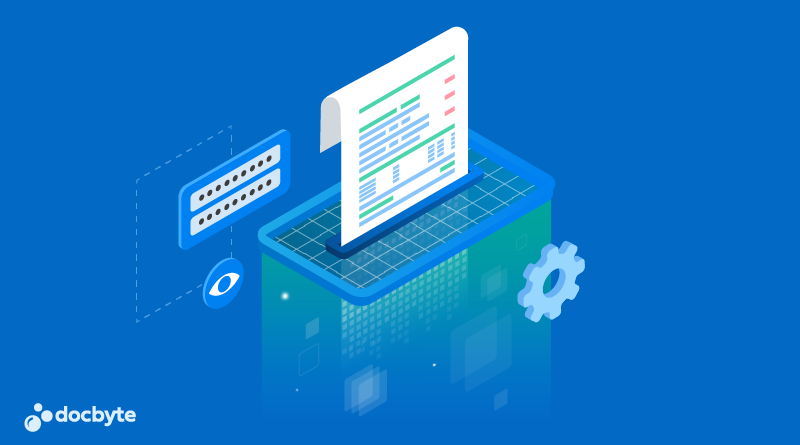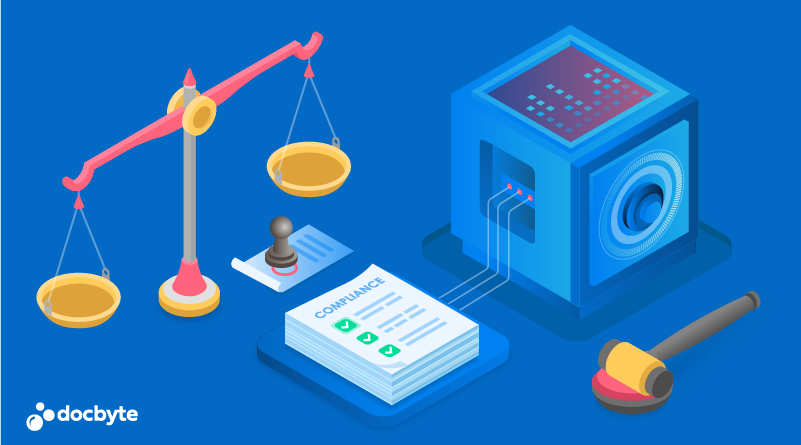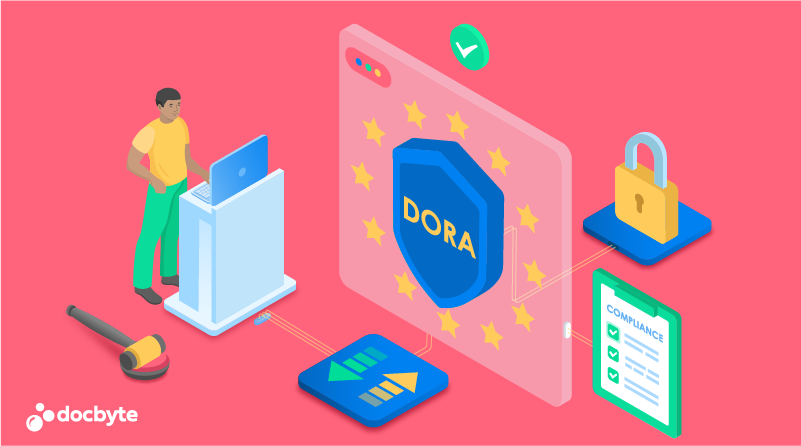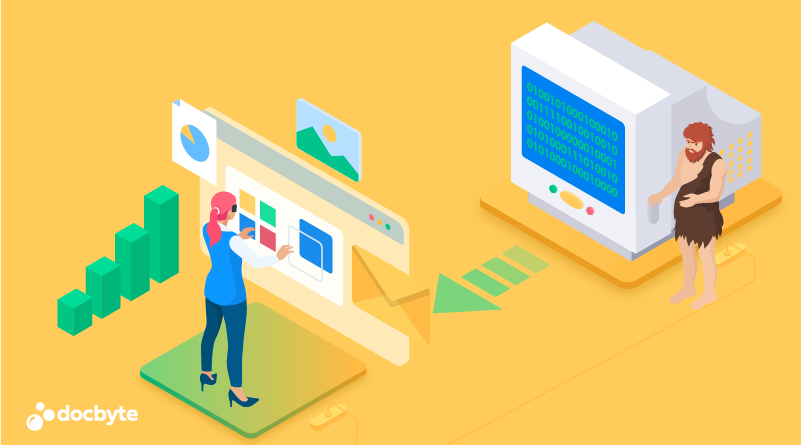Let’s admit that data shapes our lives in various forms, from personal to sensitive information. Therefore, in this ever-evolving digital realm, safeguarding and securing data privacy is a critical factor that requires immediate attention. Data anonymization plays a key role in this process, ensuring that our personal details remain confidential.
Data preservation and security become more vulnerable to ever-present threats as technology progresses. The growth of digital data has jeopardized our information for malicious activities if it’s not secured correctly. This raises the requirement for tools that are powerful in the anonymization of data.
So, you are a data enthusiast, a businessman, or someone curious about securing your information in this rising digital realm. In that case, this blog will provide enough insight to help you navigate different aspects of data anonymization. This information will focus on the significance of anonymization and its implementation to secure data following legal procedures.
The questions to preserve integrity remain: How is your data made anonymous? What is anonymization of data? What are the anonymization methods and services? Well, this blog will guide you to the intriguing world of anonymization underpinning its practical applications.
Fasten your intellectual seatbelts and let this captivating exploration take you beyond theories of data anonymization and its contribution to data privacy and security.
What is Data Anonymization?
Before heading toward the details, it’s essential to understand the answer to ‘what is anonymization of data’ and the fundamental concept behind this idea. In general, the term means altering data to promote its security while making it hard to trace the individuals related to it. In other words, anonymized data is encrypted, making identification impossible to track using the dataset.
The primary objective here is to protect and promote privacy and confidentiality. These two factors are crucial in data processing, sharing, and analysis. This ensures the safety of data from unauthorized access.
But how is it achievable? The key component in data anonymization is to remove or hide identifiable objects known as PIIs, such as names, social security numbers, or any data that can be used to identify the individual from the information. The data is then encoded using pseudocode and identifiers, making it impossible for third parties to reverse-engineer or crack the information and connect to targeted individuals. This process ensures the data remains anonymous and secure.
Many data anonymization methods can vary according to the requirements. The most common methods include randomization, generalization, pseudonymization, masking, and hashing. Each of these comes with unique advantages depending on the type of data it’s applied to and the privacy requirements it promotes.
The Evolution of Data Privacy
To understand the anonymization of data, we need to begin with its historical context. By understanding the evolution of data privacy, we can address the challenges and opportunities it presents in the digital age. Let’s walk through the different phases of data privacy that play a crucial role in document collection and processing.
Prehistoric to Printing Press
Ever since humans started recording information, data privacy has been an important concern. In ancient times, data privacy and secrecy revolved around physical security to prevent unauthorized access.
These ancient methods were soon abandoned with the introduction of the printing press in the 15th century. With this new invention, the scrolls and clay tablets were replaced by written documents. Though this recorded information on a large scale, it required immediate privacy as the information became more accessible. This historical shift underscores the evolving need for data anonymization, even in modern times.
Evolution of the Digitalized Era
With technology moving forward, the written documents needed digitalization for frequent access. This evolution promoted an unprecedented collection, storage, and sharing of personal and public information and data. With this growth, the information now became more vulnerable to attacks, highlighting the need for effective data anonymization. But let’s admit, this era made financial document processing more efficient.
Emergence of Data Protection in the Digitalized Era
With this continuous evolution, privacy regulations became a heated topic. The European Union’s Data Protection Directive laid down the foundation of protection laws in 1995. These laws addressed the privacy requirement of increased digitalization.
With technology’s evolution, the General Data Protection Regulation (GDPR) soon replaced the old principles. These regulations were implemented globally and addressed the need for previous regulations held against data protection. This regulation used data anonymization as a tool to secure privacy.
Emergence of Anonymization
Data breaches and cyberattacks became common with the digitalization of document processes. Data privacy and archiving needed to be tackled promptly. In the evolving data protection landscape, anonymization has become an indispensable tool that handles document collection without compromising privacy.
How Anonymization of Data Helps Organizations Navigate Regulatory Compliance
Anonymization services disconnect an individual’s identity from his information. Data protection regulations, like the General Data Protection Regulation (GDPR) have set strict rules to collect, process, and store information. It is important to note that non-compliance with these rules leads to serious penalties. Anonymization GDPR is a powerful tool that ensures regulatory compliance while extracting required information from data.
Anonymization for GDPR
In 2018, the European Union introduced GDPR highlighting data privacy and protection. This regulation took the following steps to secure data within an organization:
1. Consent:
Before data collection and document processes, every organization should and must get consent from targeted individuals. Anonymization GDPR works by maintaining data privacy yet using it with proper consent.
2. Data Minimization:
Only the required data should be collected. Privacy practices can be easily implemented with data collected in small and required quantities.
3. Data Portability:
GDPR encourages portability and transfer of data between devices. This transfer should comply with the regulations set by GDPR.
4. Breach/Attack Notification:
In the event of a security breach or attack, the organization should promptly report to the relevant authorities. It is important to note that anonymized data holds insignificant risk when breached as long as it is secured properly.
5. Accountability and Governance:
Any organization following GDPR must comply with its regulations and is held accountable for every action. Anonymization is depicted in every step to ensure data protection.
GDPR and Similar Frameworks
Apart from GDPR, many other regulations promote data protection regulations. Many countries enact their own laws on organizations. These laws are similar to GDPR, protecting personal information. Therefore, anonymized data remains a valuable asset across different regulatory frameworks. In this context, effective data anonymization practices become crucial for compliance and security.
These frameworks maintain a balance between data utility and privacy protection while navigating the web of data under regulations with confidence.
Are you planning on anonymizing your data? Check out our website or request a call from our experts to help you in the process.
For Whom is Anonymization Meant?
Anonymization is a crucial one-size-fits solution that expands the horizons of the industries it is embedded. Let’s break into the list of companies that should consider incorporating this tool into their daily practice to ensure data protection and strengthen privacy strategies:
1. Healthcare Providers
As hospitals and healthcare centres deal with vast amounts of sensitive patient information, anonymization is mandatory. Doing so maintains patient privacy, and medical research and analysis are still possible.
2. Banks and other Financial Institutes
Financial document processing handles crucial data. Data anonymization meaning that customer data is protected while allowing fraud detection and risk assessment.
3. Government Agencies
Government agencies deal with a wide range of sensitive data every day. Anonymization is important to protect citizen information while maintaining regulatory compliance.
4. Research Centers
Data anonymization means for research institutes, which revolves around preserving the sensitivity and privacy of information during studying and experimenting.
5. Tech-Based Companies
Such companies handle data from different users. This makes anonymization crucial to securing customer privacy. Data anonymization example can be implemented in software testing, too, as it uses real data; therefore, maintaining integrity is also a crucial factor here.
6. Marketing Firms
A marketing or data analysis firm is another example of data anonymity, as it handles large amounts of data in its operations. Anonymity enables such a firm to work with data effectively while following rules and ethical standards.
- E-Commerce Companies
Online retailers deal with excessive amounts of customer data. Anonymity is crucial for securing the privacy of information while ensuring compliance with data protection rules.
- Market Research Firms
Data collection and analysis are important for firms to make informed business decisions. By maintaining anonymity here, data confidentiality can be secured.
- Human Resource Agencies
HR and recruitment firms deal with the personal information of many job applicants. This data can be protected by anonymizing it while using it for hiring purposes.
Types of Anonymization
Anonymization is a flexible tactic used to preserve the privacy requirements of digitalized data. To make data anonymized, different techniques can be employed. Each technique has a unique advantage and can be implemented in certain use cases.
However, it is important to note that each technique can be used individually or in combination with another depending on the requirements set by the targeted organization or the data to be processed.
The selected technique should fulfill the goals of data protection and privacy preservation. This ever-evolving landscape of safeguarding data privacy has made it important to understand every anonymization technique to secure responsible data management.
Let us explore the different anonymization methods while highlighting their main characteristics and applications.
Randomization
This is the fundamental technique in anonymization, which involves replacing specific data values with an arbitrarily generated one. This adds an element of unpredictability to the data, making it impossible to track the origin of information.
For instance, during medical research, a person’s age could be altered with a randomly generated number within a specific limit. Randomization is a powerful technique if you aim to protect data while maintaining its statistical properties.
Generalization
This technique replaces a particular data value with generalized yet less precise information. Generalization is applied when details can be ignored because a broader aspect of data is required. For example, we can simply generalize the concept into income range while storing income values. This maintains data utility while strengthening privacy.
Pseudonymization
Pseudonymization provides details by replacing identifiable data with pseudonyms or unique identifiers; this means that instead of using real names or details, we can represent individuals with randomly generated codes. These identifiers are later used for data processing. This technique is widely applicable in medical research or customer management.
Masking
This hides sensitive data by replacing it with a masking character, mainly an asterisk (*). By doing so, sensitive information, like credit card or social security numbers, can be protected. For example, the first six digits of a credit card are displayed in records while the remaining numbers are masked.
Hashing
Hashing encodes data with a unique set of string characters. The only thing that makes this technique different from encryption is that once hashing is done, it cannot be reversed. Hashing protects sensitive information while preserving its ability to verify data integrity. A hashed data may be used for storing passwords, data integrity verification, or anonymization.
Implementing Anonymization: Theory to Practice
The fundamental concepts of anonymization are data security and privacy. However, implementing this process is the crucial part where real challenges are faced. For effective data anonymization, one must comprehend the theoretical aspects of the process, followed by some of the best practices that ensure the protection of sensitive data while maintaining its integrity. So what are we waiting for? Let’s break into these steps!
Data Assessment
To anonymize data, you must first have a thorough understanding of it, along with its structure and storage location. Data assessment can help you identify the cornerstone on which the anonymization process is built. This assessment helps in identifying the sensitivity and potential risks of the data.
Data Classification
Not every data carries the same risk levels; therefore, every data differs from the others in terms of sensitivity. So, we must classify the data according to its sensitivity level. By doing so, we can implement anonymization to protect highly sensitive data and allocate resources effectively.
Selection of Anonymization Technique
After assessment and classification, the next step involves selecting a technique. It can be either an individual technique or a combination, depending on the nature of the data to be anonymized and the organization.
Data Mapping
The selection of technique follows with mapping the data to highlight elements that require anonymization. Data mapping gives further information on how the data will be transformed. This step is a blueprint of the anonymization process, focusing on accuracy and consistency.
Anonymization Process
Finally, you can now execute the anonymization process after applying the selected techniques to mapped data. This process ensures the thorough transformation and encryption of sensitive data while maintaining its integrity.
Testing and Validation
After the implementation of the anonymization process comes the testing and validation part. This step ensures that data follows the privacy regulations and fulfills its intended purpose.
Documentation
Once all the steps above are correctly checked, it’s time to maintain a comprehensive documentation guide. This documentation includes a detailed application of the technique, reasoning and considerations for the data. Proper documentation is essential for regulatory compliance and facilitating audits.
Best Practices for Implementing Anonymization
- Creating Anonymization Frameworks and Templates: This revolves around creating a template for anonymizing documents and processes. The documentation provides a thorough explanation of the selected methods for implementation, the rationale behind these choices, and potential future considerations. .
By making a standard process template, you can streamline future anonymization practices. Preparing the documentation helps in verifying regulatory compliance and the transparency of the data.
- Data Minimization: Target the relevant and required data only and store it. This minimizes holding requirements and the risk associated with them.
- Regular Auditing: By conducting frequent audits of anonymized processes, compliance with privacy regulations can be ensured
- Data Encryption: Encryption of data to ensure its privacy during its transfer between devices.
- Access Control: Limit controls to specific individuals who can access and work with the anonymized data. This reduces the risk of cyberattacks and data breaches.
- Secure Storage: After applying the anonymization process to data, secure it properly using some of the best techniques to prevent unauthorized access.
- Data Retention Regulations: Set policies to define the tenure of data anonymization.
- Latest Updates: Stay updated with the latest trends in data protection regulations, as it helps you choose best practices to implement anonymization.
Data Anonymization as a Service
This revolutionising era transformed anonymization practices. The frequent addressing of constraints has expanded the horizons of anonymization, raising a new paradigm – Data Anonymization as a Service (DAaaS). This approach offers various benefits and solutions to different organizations seeking data protection.
Understanding the Basics of DAaaS
Data Anonymization as a Service outsources the anonymization to third-party service providers. These providers are experts in anonymization techniques and practices; thus, they help safeguard sensitive information according to privacy regulations.
Here is how it works:
Expertise and Resources:
Service providers are experts in anonymization; hence, they have relevant knowledge, experience, and resources to ensure effective operations.
Scalability:
AaaS experts can scale anonymized projects according to different sizes of datasets and organisation demands.
Cost Efficiency:
Outsourcing the project rather than seeking in-house anonymization can save a greater number of expenses.
Compliance Assurance:
DAaaS providers are well-trained and updated with recent data protection regulations; therefore, they can ensure full compliance with legal requirements.
Benefits of DAaaS
Time and resource Savings:
Organizations can shift their focus on core operations by outsourcing the project to external DAaaS providers. This saves them both time and resources.
Expert Guidance:
DAaaS providers ensure expert guidance on anonymization techniques that ensure maximum effectiveness.
Reduced Risk:
Compliance risks are mitigated with experts handling the processes, and data breach probabilities are reduced significantly.
Data Privacy:
DAaaS providers ensure the data remains completely anonymous.
Flexibility:
DAaaS providers have vast experience from different industries; therefore, they can easily meet an organization’s specific requirements.
Challenges and Considerations
Despite the numerous advantages, choosing a reputable provider is essential to ensure your chances of success in anonymization. As for considerations, the type of data used, regulatory compliance, and level of customization are crucial.
In the world of digitalization, where data privacy is crucial, DAaaS is a noteworthy solution. This gives an organization the power to manage data while safeguarding its privacy and meeting legal requirements. This approach evolves the digital landscape of data protection.
See how Docbyte can help you in the context if you’re looking into anonymization!
Use Data Processing Tools to Anonymize Your Data
With data anonymization clearly stated, let’s look into the methods and tools available for implementing this strategy. Data processing tools are an important factor in the anonymization process. Let’s discuss why and how these tools can be used to streamline the process.
Why Use Data Process Tools for Anonymization
Efficient Data:
Data processing tools can anonymize large-scale data quickly and effectively while minimizing resources.
Consistent Data:
Data processing tools ensure consistency while reducing error rates during anonymization.
Complex Data Handling:
Such tools can handle data with different complexities while applying relevant anonymization methods to each data element.
Automatized Data:
Such tools are automated and reduce manual intervention requirements while enhancing data protection and anonymizing processes.
The Best Anonymization Services Out There: Top Five Competitors
Many providers provide anonymization solutions to organizations to help safeguard sensitive information and comply with privacy regulations. Let’s explore some top competitors in concern of anonymization services.
Docbyte
Being a leading and reputed service provider, docbyte is committed to providing and safeguarding privacy in different industries following legal policies. Docbyte manages anonymization while preserving the integrity of data.
IBM
IBM implements advanced generalization, pseudonymization, and masking techniques for the anonymization solutions, followed by integration ability and robust support.
Talend
If you’re looking for a user-friendly anonymization solution, Talend is the right choice for you. It uses various methods to safeguard data protection while implementing features like mapping and documentation.
MicroFocus Voltage SecureData
MicroFocus anonymizes data using encryption and tokenization techniques to secure the data properly.
Privitar
Privitar focuses on privacy engineering. This trusted anonymization platform safeguards data protection while boosting its integrity.
BigID
Apart from data anonymization, BigID is known for its data discovery and classification capabilities. This helps organizations recognize sensitive data and anonymize it with relevant techniques.
De-Anonymization: The Reverse Process
When anonymization exists to secure privacy, a counter process of de-anonymization is also important. This reverse process redefines and re-identifies the vulnerable anonymized data. To better understand this idea, let’s delve into this process.
Understanding the Idea
De-anonymization takes random pseudonymous data and applies random techniques to it to re-identify the traces of the individual to whom the data belongs. The main focus is linking the data to its owner while compromising their privacy.
Common Methods of De-Anonymization
De-anonymization helps an organization strengthen its privacy and protect the anonymized data. Below are some common methods used in this regard:
Statistical Re-Identification:
Attackers use statistical models to get insight into the anonymized data and reach targeted individuals.
Data Linkage:
Another common de-anonymization method is linking two different datasets together to identify individuals.
Background Information:
This strategy comes into play if the attacker has access to the dataset containing background knowledge about an individual.
Machine Learning:
Smart ML algorithms can be applied to datasets to predict information about individuals.
The Challenges and Risks of De-Anonymization
- Privacy Violation:
De-anonymization exposes sensitive information; therefore, the fundamental risk includes violating an individual’s privacy.
- Regulatory Non-Compliance:
Unions like GDPR enforce regulatory compliance on organizations to protect information by means of anonymization. Whereas de-anonymization results in regulatory non-compliance and legal repercussions.
- Loss of Trust:
Organizations that have a flawed kyc documentation process and fail to secure anonymized data lose their trust in front of their customers, clients, and stakeholders.
- Damaged Reputation:
When a flawed kyc documentation process or de-anonymization activity becomes public, it can significantly harm an organization’s credibility.
Balancing Data Preservation and Anonymity
The real challenge pops up when you’re trying to balance data preservation and anonymity; do note it is important to maintain the balance. While safeguarding data privacy, the anonymized data must be helpful to for legitimate purposes (like researching or analyzing).
Maintaining this balance requires proper planning, choosing the proper anonymization techniques, and, last but not least, detailed monitoring of de-anonymization procedures.
Conclusion
Maintaining integrity while safeguarding data privacy is very important in this alarmingly digitalized world. By now, we have learned how anonymization of data proves helpful in that context. The process begins with transforming the data to make it untraceable to its origin. With the evolution of privacy regulations, GDPR has linked anonymization to regulatory compliance for organizations.
The blog deliberates some useful steps of assessment, classification, method selection, and execution to pursue while implementing anonymization, along with some best practices. It is important to understand the clear difference between the two concepts of anonymization and de-anonymization.
While one ensures privacy, the other poses a significant risk that makes the associated individual a target and ruins an organization’s credibility and reputation.







